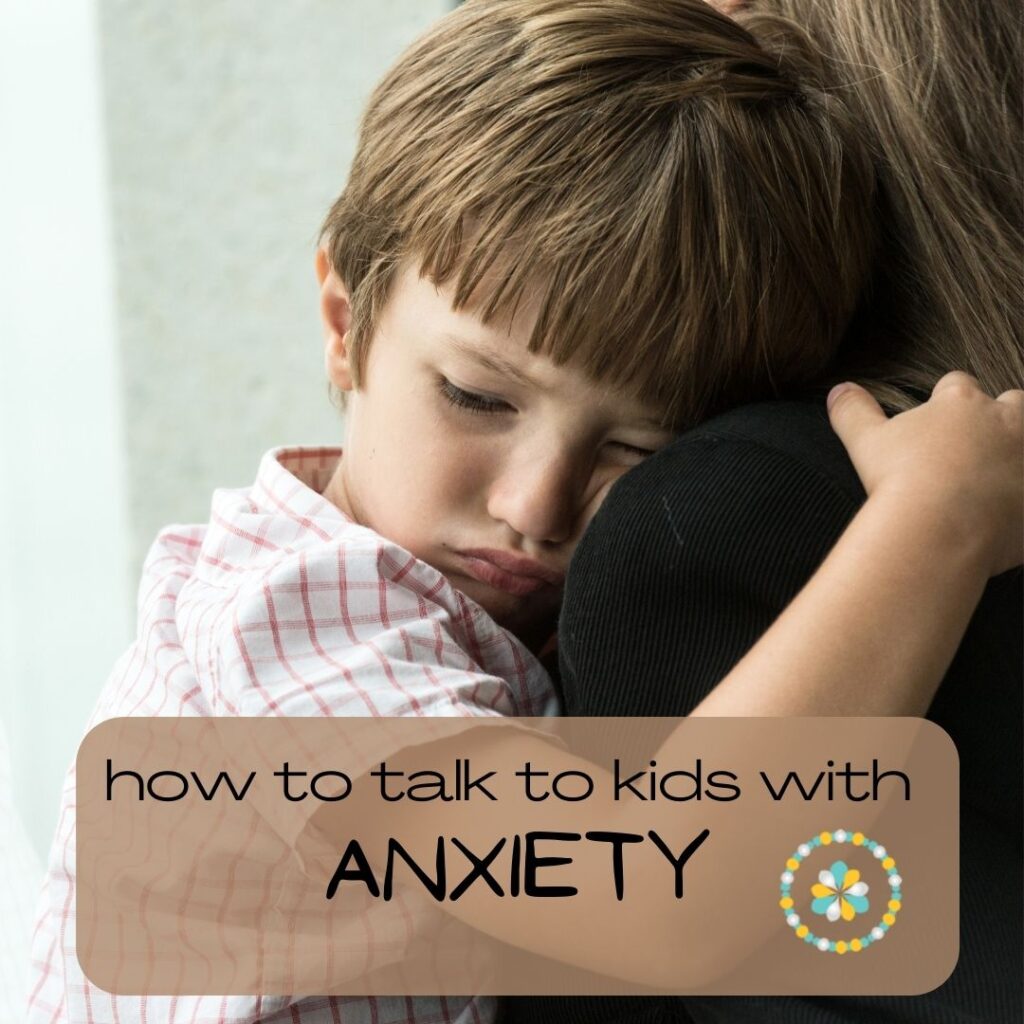
Anxiety is an illness of “What Ifs”. It’s different from fear which is often based on specific danger. Anxiety is more general. It is a feeling of persistent worry, often about predictable themes within a child’s life. Anxiety works in a cycle. It is self reinforcing.
Here’s an example: Say your child passes an angry dog behind a chain link fence, the dog barks and scares your child. From then on when your child sees a dog they start crying and clinging to you afraid to move. In order to avoid your child’s upset you avoid dogs altogether, crossing the street when you see them, avoiding friends’ homes who own them.
The above example might seem reasonable, as avoiding dogs seems to prevent the child from becoming emotional. This isn’t actually what happens. When you avoid dogs to prevent your child’s emotional response you actually strengthen their fear of dogs. By avoiding dogs you’re confirming the “what if” of danger.
The child’s thought is then, “If my grown up avoids dogs then it must be true that all dogs are dangerous.”
Anxiety wants us to avoid things that inspire fear because of the “What If’s”. What if I embarrass myself? What if I fail? What if they don’t like it?
Avoidance of those fears then confirms the validity of them. “Good thing I didn’t go to that sleepover because it would’ve been scary.” Before the sleep over the child had a stomach ache, they felt uneasy. So they avoided the sleepover! This made the stomach ache go away. They avoided it and those symptoms went away which confirmed that the sleepover WAS scary. Not going made them feel better, and they should definitely avoid it again next time!
Anxiety and avoidance combine to create worry momentum. The person with anxiety experiences situations as being bigger, scarier, and less manageable than they actually are.
But when a child faces an initially scary event and they lean in, investigate, and feel the worry without avoidance this breaks the cycle. It decreases physical symptoms the next time around. It creates a “brave folder” in their mind for future reference.
So how do you talk to a kid with anxiety?
Responses will vary based on age but your first step is to validate. To be clear here, validate does not mean agree, it simply means to acknowledge.
“Wow. That was a really big dog and he was so loud. You weren’t expecting that to happen.”
Notice about the above statement that it’s not a judgment, I didn’t even use the word “scary”. It’s an objective and empathetic reflection of what the child just experienced. In Play Therapy we’d refer to that as tracking.
After you validate, you investigate. Become curious about the experience, especially where it occurs in your body. Here you might say something like, “My heart started beating really fast when that dog barked! I could feel it in my chest. ”
Become curious about the context that the experience occurred in. “We were walking right past that dog’s house, I wonder if he felt scared too? Sometimes dogs bark to protect their owners.” Or in another setting it might sound like “There are a lot of people here. You aren’t sure who is familiar. You can hold my hand until you’re ready to explore.”
After you validate and investigate, anchor. You are your child’s emotional anchor, the tone setter and the eternal reference point. Children’s responses are based on adult’s responses. If you feel anxious, they will feel that. If you feel confident, they will feel that.
Rather than forcing children into experiences they aren’t ready for, to model the bravery you want to see. Greet the gentle friendly dog with warmth and enthusiasm. Say hello to their teacher like you’re seeing an old friend! And give plenty of opportunities for independence and healthy risk taking so they begin to understand their limits and their abilities. Invite children to be brave.
